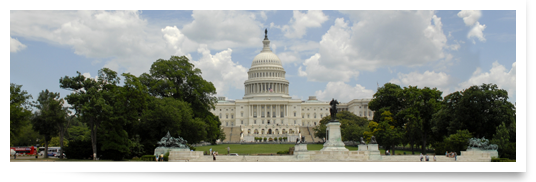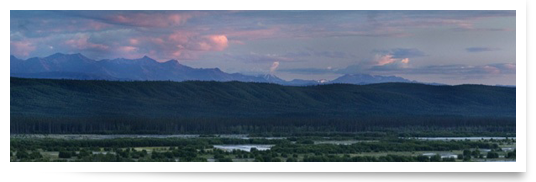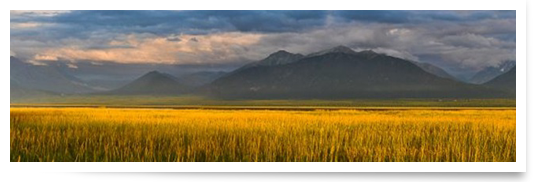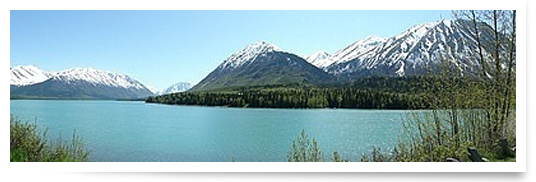Alaska Education Library
Following the Senate HELP Committee field hearing that I chaired at the Alaska Federation of Natives convention on October 19, 2012, I created an “Alaska Education Library” to help Alaskans share new, effective ideas that are helping to increase our students’ success, both as students and as people. Here, you will find information from Alaskans who think outside the box and get results.
Any Alaskan—educators, parents, or members of a school board, tribe, Native organization, the University, a state agency, or other non-profit—can e-mail a summary of their policies, methods, or innovations to AlaskaEdSuccess@Murkowski.Senate.Gov. Those stories will then be posted here for other Alaskans to learn from and, if appropriate, replicate for their students. Data, charts, pdf documents, links, and other formats can be accommodated.
Thank you so much for your work with Alaska’s future leaders,
Lisa Murkowski
The Alaska Education Library
Dog Mushing in Huslia
George Attla of Huslia, Alaska The legendary open-class sprint dog racer has won more Fur Rendezvous World Championships (10 wins) than any other musher to date. He won 8 North American World Championships and 9 ISDRA unlimited class metals. His book, Everything I know about Training and Racing Sled Dogs, is still considered the musher’s bible. His life story became the subject of a film, Spirit of the Wind and a book of the same title has been published. In 2000 he was awarded the Best Musher of the 20th Century and voted No. 2 Alaskan Athlete of the Century. In 2007, he was inducted into the first Alaska Sports Hall of Fame. 2008 marked his 50th year of competitive sled dog racing. In April 2011, he won the Bergman Sam Memorial Koyukuk River Championship in Huslia.
Mr. Attla has been working for five years to establish a program in Huslia that incorporates dog mushing into the school curriculum. He worked closely with the teachers and the principal there and this past school year, they began a pilot program that gives students credit for working and caring with the sled dogs. He works with kids from 6 years to 16 year olds and currently have 33 in the program. This is a non-profit program but the children are receiving academic credit for participating.
He teaches the kids how to hook up the dogs, how to care for the dogs and how to race the dogs. They are called the Huslia Hustlers. There are 4 kennels in Huslia that support his efforts and he has buy in from the school teachers and principal and the community which is most important. There are about 40-50 community volunteers total.
The children organized their own races this year and they varied from 1 miles sprints to 7 ½ mile courses. There used to be a big turnover of teachers in Huslia, this year not one resigned and one even has stayed over the summer. He challenged the teachers to participate in the program and “mix” with the people. He said historically, the teachers had been seen as the enemy and they stayed within the fenced school and never interacted with the community members. That has now changed.
The students now have better attitudes. Out of the 33 students in the program, not one disciplinary problem was reported all year. Many of the girls that participated were part of the Huslia basketball team that went to the state championships.
They told many stories about how they are using the dogs to teach writing and grammar because now the teachers have the students write about the dogs. It teaches math because they have to use fractions and divisions to feed the dogs, etc. The dogs are incorporated into most of their subjects because the children have now bonded with them and relate to their furry friends.
The pilot program will continue next year, September – June 2014. More info here: http://attlamakingofachampion.com/
Preparing Indigenous Teachers and Administrators for Alaska Schools
- Funded by five consecutive grants from the Alaska Native Educational Equity Program (ANEP) at the U.S. Department of Education, the PITAAS program at the University of Alaska Southeast (UAS) has as its primary goal to recruit, retain, and support Alaska Native students interested in becoming a teacher, paraprofessional, or school administrator.
- PITAAS provides social, academic, and culturally relevant support to both high school and college students who are interested in a career in education. Scholarships are also awarded.
- Of the 54 Alaska Native students who graduated from UAS in the last decade with support from the PITAAS program, 19 are currently teachers or administrators in Alaskan schools.
- Currently, 41 students from across Alaska are PITAAS students.
Alaska Native Cultural Charter School
The Alaska Native Cultural Charter School, a public charter school in Anchorage, serves children from preschool through 7th grade. The founder of the school is Martha Gould-Lehe, a veteran teacher and Alaska Native. Through a community of engaged parents, staff, elders, and others, this Title I school was honored as a National Title 1 Distinguished School due to their rising achievement scores.
The 215 students at the Alaska Native Cultural Charter School—which include Alaska Native, Hmong, Caucasian, African American, Native Hawaiian, and Hispanic children—begin each day with a Community Gathering. They recite the Pledge of Allegiance in English and Yup’ik and participate in a social-emotional learning presentation that is reflective of Alaska and its cultures. Then, staff and students are recognized and celebrated. Each Monday, an Alaska Native elder ends the gathering by talking with the children about their experiences with education.
In class, the students spend at least two hours a day on rigorous reading and writing lessons and at least an hour on math. Students also benefit from receiving two hours a week in Yup’ik language instruction per week. The children also participate in culturally-relevant physical education, math, and art lessons. Each grade level focuses on a different Alaska Native subculture. According to Principal Patsy Shaha, the students excel because of excellent, focused instruction, and because “they are being nurtured with culture."
If you would like to learn more about the Alaska Native Cultural Charter School, you can find the school’s website at www.asdk12.org/schools/anccs/pages.
Alaska’s Progress
The Alaska Department of Education and Early Development shared data with Senator Murkowski that describes the graduation rate gaps and achievement gaps between All Students and Alaska Native/Native American students in each school district. As you will see from the charts below, some school districts have closed, or even erased, their gaps. While many factors influence student success and comparing one group of students with students in the following year can be flawed, there is good news happening across Alaska. If you would like additional information about the data provided below, please contact the school district(s) directly. Contact information can be found at www.eed.state.ak.us/Alaskan_Schools/Public.
School Districts Success: Closing Graduation and Achievement Rate Gaps
All Students Compared to Alaska Native/American Indian Students








